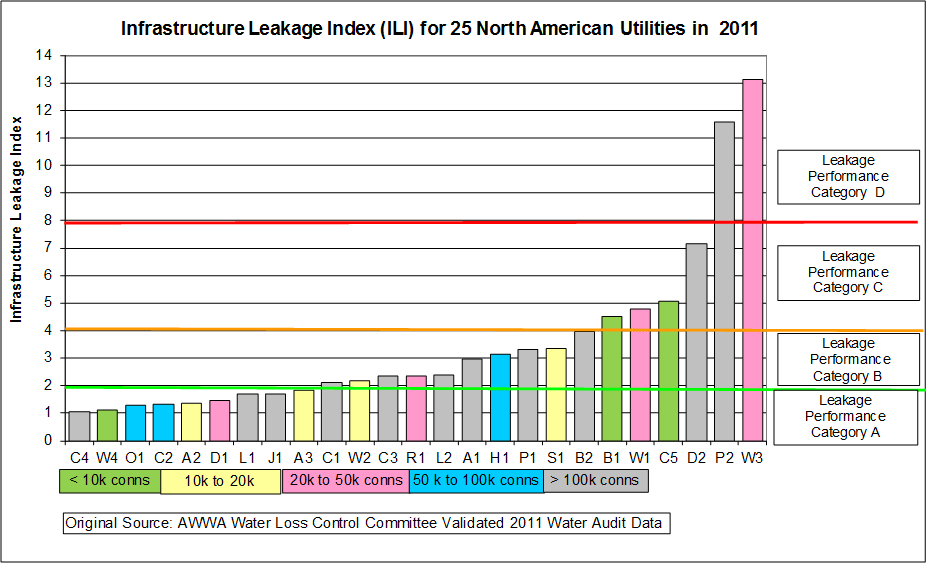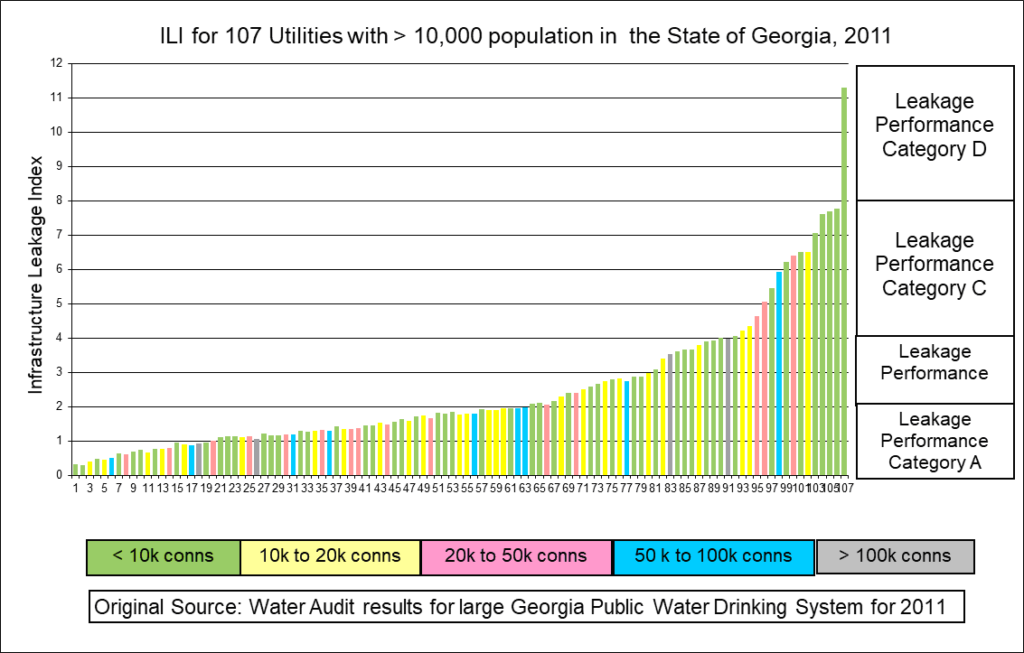ILIs in North America – update 2014
These validated North American datasets are comprised of 2 groups of data. Both datasets, by design, are not anonymous, and in their original formats (see web links below) include water system names. The format of the audits in both datasets is the AWWA Free Water Audit Software, which is built on the IWA/AWWA Water Balance.
The Water Audit Data Initiative (WADI) and Georgia datasets have been subjected to a ‘top-down’ validation process. This process involves detailed phone interviews, conducted by water loss experts, with those that prepared the audit from each utility. The focus of the validation process is to ensure data validity assessments are accurate, but often involves correcting any input errors discovered through the interview process. As a result, the validation process focuses more on the accuracy of the data validity score, than the accuracy of the performance indicators, due to the limitations of the top-down process. Thus a “validated” water audit could still have a low data validity score, and not yet be reliable regarding performance indicators. An example would be where a utility has yet to verify supply volumes with field testing.
The first of the two datasets is gathered each year by the AWWA Water Loss Control Committee through its Water Audit Data Initiative (WADI). The WADI has been in place since 2011, and each year the committee collects 20 to 30 audits from water systems across North America. The Leakage Performance Categories A to D shown at the side of the bar chart are not used in North America but are shown for comparisons with ILI data sets for other Geographical Regions and countries in this Website.

The second bar chart is a dataset gathered each year by the State of Georgia, which mandates water audits be submitted annually for the 107 water systems serving more than 10,000 population. This requirement began in 2011, and since 2012 each year the State of Georgia receives over 200 water audits.

10,000 population is roughly equivalent to 3000 service connections, which is often currently used as a lower limit for application of the standard UARL Equation (which is used to calculate the ILI). This is because as system size decreases below 3000 service connections, in some circumstances (e.g. low pressures, flexible pipe materials) the standard UARL formula tends to over-estimate ‘how low could you go’, leading to the possibility of ILIs less than 1.0 for such very small systems.
In other countries, in systems with more than 3000 service connections, ILIs as low as 0.7 can be achieved if all leaks surface and are quickly repaired; otherwise ILIs less than 0.7 usually indicate that the data used in the Water Balance, and to calculate UARL, should be double checked.
The datasets have been provided by Will Jernigan, PE, with permission from AWWA and Georgia Environmental Protection Division…Will presently serves as Secretary to the AWWA Water Loss Control Committee, Chair of its Software Subcommittee, and Chair of the Georgia Water Loss Control Committee.
Link for AWWA data: http://awwa.org/waterlosscontrol
Countries which already have sufficient good quality ILI data to justify a separate Webpage within Global ILIs are invited to contact https://www.leakssuitelibrary.com/contact-us/